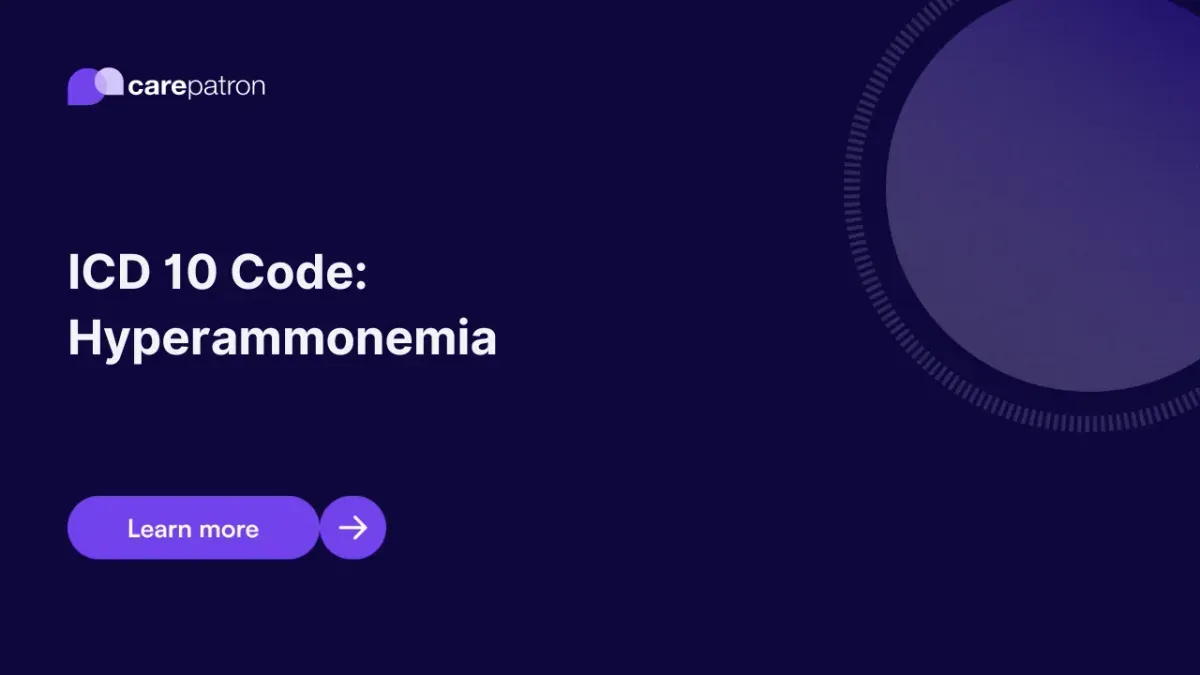
Hyperammonemia ICD-10-CM Codes
Read this short guide and learn about hyperammonemia ICD codes you can use.
Use Code
Commonly asked questions
Apart from Item 5 above, no other ICD codes specify hyperammonemia in their names.
Healthcare professionals will count the ammonia amounts in the blood via a blood test. They may also ask for urine samples from the patient. Hyperammonemia can cause damage to the brain, so they might also conduct imaging tests to check for any damage.
That depends. Hyperammonemia is a symptom of a much larger problem, so whatever is causing the hyperammonemia needs to be addressed. In terms of managing it, making lifestyle changes helps. Changes can include a diet that doesn’t contain trans fats or high fructose, avoiding alcohol, avoiding red meat, and taking required medication as instructed (nothing more, nothing less).
EHR and practice management software
Get started for free
*No credit card required
Free
$0/usd
Unlimited clients
Telehealth
1GB of storage
Client portal text
Automated billing and online payments
